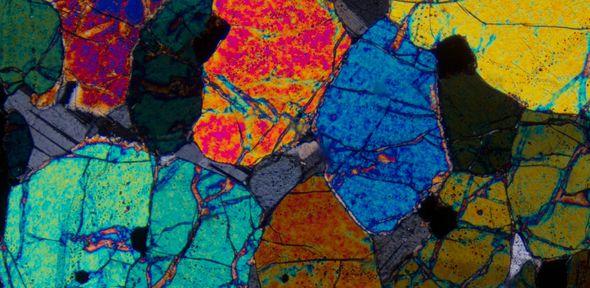
First Year (Part IA)
In first year, Natural Sciences students take courses in Maths and three other science subjects—Earth Sciences is one option. Our first year Earth Sciences course is broad-ranging and dynamic. It includes:
- Plate tectonics and Earth structure.
- Volcanoes and igneous processes.
- Minerals and metamorphic rocks.
- Oceans, climate, and sediments.
- Palaeobiology and fossils.
- Earthquakes, tsunamis and other geohazards.
During term time, students can expect three one-hour lectures and three one-hour practical classes each week—practicals closely follow the lecture material to aid understanding—plenty of time to look at rocks with a hand lens or down a microscope. Students also have weekly supervisions in groups of two or three with a graduate member of department (PhD candidates, postdocs, and lecturers)—valuable face-to-face contact time for students to ask questions about course material.
Observing and interpreting rocks in the field is a traditional, but vital, skill. During the Easter vacation, we visit the Isle of Arran in Scotland, which has a more-varied geology in a small area than anywhere else in Britain—explore the deposits of Devonian rivers, Carboniferous swamps and Permian deserts, and walk through the roots of a Tertiary volcano.
For more details on the first year Earth Sciences course, please visit our Current Undergraduates page.
Watch the video below for a sample part IA lecture:
Later Years (Parts IB, II, & III)
The breadth of the Natural Sciences course reflects the interdisciplinary nature of the sciences. Before committing yourself to one subject, you are able to study a variety of courses, some of which, like Earth Sciences, may be new to you. Many students discover a passion for Earth Sciences in their first year and choose to continue in subsequent years.
If you decide to progress to second year Earth Sciences (Part IB), you will start to specialise in specific areas of the subject. Field work will take you to the South West, where you'll explore the Jurassic and Cornish coasts. Whereas, the IA Earth Sciences course takes a holistic view of the Earth, the IB Earth Sciences course tackles the fundamentals of each topic in more detail.
In third year (part II), the Earth Sciences course will take students to the boundaries of the subject—to areas of active research and controversy.
Students have the option to continue studying Earth Sciences for a fourth year (part III), which leads to an MSci degree.
